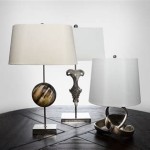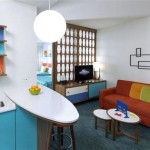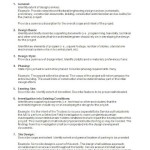How to Interior Design Your Home: A Comprehensive Guide
Interior design is the art and science of enhancing the interior of a building to achieve a more aesthetically pleasing and functional space. It encompasses various aspects, from selecting furniture and color palettes to incorporating lighting, textures, and materials. Whether you're a seasoned homeowner or a first-time buyer, understanding the basics of interior design can significantly impact the look and feel of your home.
1. Define Your Style and Function
The first step in any interior design project is to define your style and desired functionality. Consider the following questions:
- What kind of atmosphere do you want to create? (e.g., modern, traditional, minimalist, eclectic)
- What are your preferences for colors, textures, and patterns?
- How do you envision using each space? (e.g., living room for entertaining, bedroom for relaxation, kitchen for cooking and dining)
- Do you have any specific needs or requirements, such as accessibility or storage?
Once you have a clear understanding of your preferences, you can start to narrow down your choices and develop a cohesive design concept.
2. Create a Mood Board
A mood board is a visual representation of the style and atmosphere you want to achieve. It can include images of furniture, fabrics, paint colors, artwork, and other decorative elements. Creating a mood board helps you visualize your ideas, identify any inconsistencies, and ensure a consistent look throughout your home.
You can create a physical mood board using magazines, fabric swatches, and paint samples. Or, you can create a digital mood board using online tools such as Pinterest or Canva. The purpose of the mood board is to serve as a visual guide that you can refer to as you make decisions about furniture, accessories, and other design elements.
3. Choose a Color Palette
Color plays a significant role in interior design, affecting the mood, atmosphere, and overall perception of a space. When selecting a color palette, consider the following factors:
- Natural Light: The amount of natural light in a room will influence how colors appear. Lighter colors tend to reflect light, making a room feel brighter and larger, while darker colors absorb light, creating a more intimate and cozy atmosphere.
- Purpose: The purpose of a room can also guide your color choices. For example, a bedroom may benefit from calming colors like blues and greens, while a kitchen may feel more vibrant with brighter hues like yellows and oranges.
- Personal Preference: Ultimately, your personal preference should play a significant role in your color selection. Choose colors that you genuinely enjoy and that make you feel comfortable and happy.
You can use a color wheel to help you create harmonious combinations. For example, analogous colors (those next to each other on the color wheel) create a sense of unity and flow, while complementary colors (opposite each other on the color wheel) create high contrast and visual interest.
4. Plan the Layout and Furniture
The layout of your furniture plays a vital role in creating a functional and aesthetically pleasing space. It's essential to consider the flow and movement patterns within each room, ensuring that there is enough space for walking, sitting, and performing various activities.
Before purchasing furniture, it's helpful to create a floor plan. You can use graph paper or online tools to draw a scaled representation of the room and experiment with different furniture arrangements. Measure existing furniture and take note of any existing architectural features, such as fireplaces, windows, and doors.
5. Select Furniture and Accessories
Once you have a general layout in mind, you can start selecting furniture. Consider the following factors:
- Style: The style of your furniture should complement the overall design concept and your personal preferences.
- Functionality: Ensure that the furniture you choose meets your needs and provides adequate storage and seating.
- Size: Select furniture pieces that are appropriate for the size of the space.
- Comfort: Choose comfortable furniture that you will enjoy using.
Decorative accessories, such as throw pillows, rugs, artwork, and plants, can add personality and style to your home. Use accessories to inject color, pattern, and texture into your space. Remember to maintain balance and avoid overcrowding the space.
6. Pay Attention to Lighting
Lighting is an essential element of interior design that can significantly impact the mood and functionality of a space. Consider the following types of lighting:
- Ambient Lighting: This provides general illumination and can be achieved with overhead fixtures, such as ceiling lights and chandeliers.
- Task Lighting: This provides focused light for specific tasks, such as reading, working, or cooking. It can be achieved with table lamps, floor lamps, or under-cabinet lighting.
- Accent Lighting: This highlights specific features, such as artwork or architectural details. It can be achieved with spotlights, track lighting, or wall sconces.
Consider using a combination of different lighting types to create a balanced and functional lighting scheme. Dimmers can be used to adjust the intensity of light and create different moods.
7. Don't Forget the Small Details
The small details can make a big difference in interior design. Consider the following factors:
- Window Treatments: Curtains, blinds, and shutters can control light, privacy, and style. Choose window treatments that complement the style of your home and provide the desired level of light control.
- Textiles: Fabrics, such as rugs, curtains, and throw pillows, can add texture and color to your space. Consider using a variety of textures to create visual interest.
- Accessories: Decorative accessories, such as vases, sculptures, and candles, can add personality and interest to your home. Choose accessories that reflect your style and complement the overall design concept.
Remember to maintain balance and avoid overcrowding the space. A few well-chosen accessories can make a bigger impact than trying to fill every corner with items.

How To Design A Room Like An Interior Designer Step By Greenhouse Studio
Interior Designers Share How To Make Your Home Look Better For Free

Home Interior Design Tips How To Decorate A Tasteful
:strip_icc()/cdn.cliqueinc.com__cache__posts__212361__-2030968-1483470364.700x0c-8571e60cad7b42a981ab29ae10b5c153-497b002f87af4747b2ab38b560e7c0fd.jpg?strip=all)
How To Decorate A Living Room 20 Ideas And Common Mistakes
How To Add Color Your Home According Interior Designers

How To Sketch Interior Design

Interior Design Home Decor

How To Present A Client S Interior Design Mood Board The Kuotes Blog

How To Create A Moody Interior Kristina Lynne

How To Bring Quiet Luxury Into Your Home Decor The Trend Moves Inside








